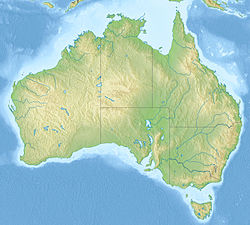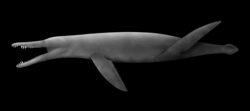| Toolebuc Formation | |
|---|---|
| Stratigraphic range: | |
| Type | Geological formation |
| Unit of | Rolling Downs Group |
| Underlies | Allaru Formation |
| Overlies | Wallumbilla Formation |
| Thickness | Up to 65 m (213 ft) |
| Lithology | |
| Primary | Limestone, mudstone |
| Other | Shale |
| Location | |
| Coordinates | 20°24′S144°24′E / 20.4°S 144.4°E |
| Approximate paleocoordinates | 52°42′S132°30′E / 52.7°S 132.5°E |
| Region | Queensland |
| Country | Australia |
| Extent | Eromanga Basin |
The Toolebuc Formation is a geological formation that extends from Queensland across South Australia and the Northern Territory in Australia, whose strata date back to the Albian stage of the Early Cretaceous. Dinosaurs, [1] pterosaurs, plesiosaurs, ichthyosaurs, protostegid turtles, sharks, chimaeroids and bony fish remains are among the fossils that have been recovered from the formation.










